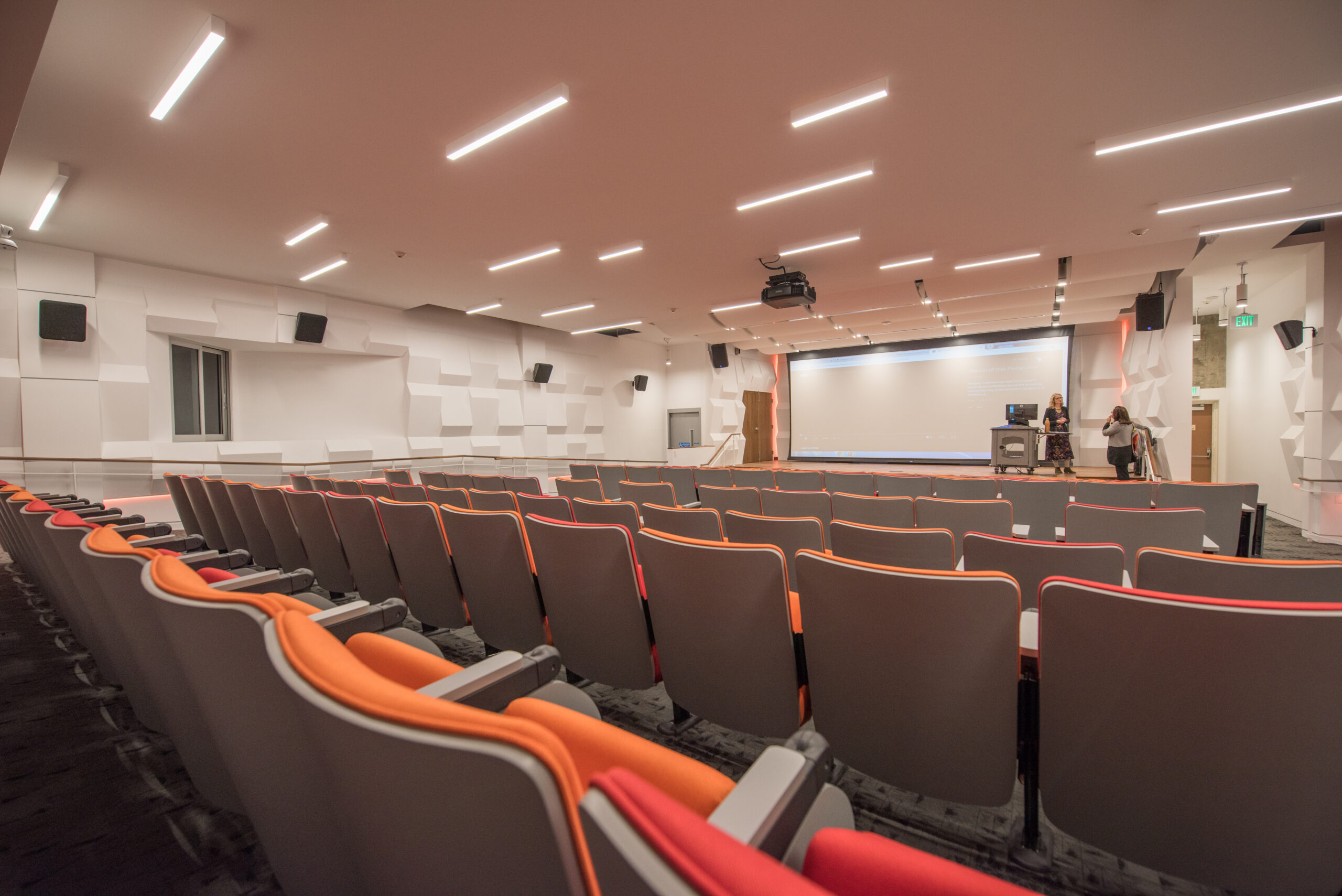A classroom at csudh with empty seats, will it be the new normal, or will it one day come back full of students? Photo Courtesy of CSUDH
By Andre Adkins, Staff Writer
Education was heavily impacted through the pandemic, as students spent more than a year and a half on Zoom and virtual learning. However, Zoom-based classes could remain an option for college education post-pandemic.
For some students, the dislike and awkwardness of being in a Zoom meeting eventually passed and adapted to the learning environment. Dylan Cornwell, a senior majoring in behavioral science, is a big supporter of Zoom classes. Cornwell mentions students who do not have reliable transportation to get to campus could have the option of taking a Zoom class rather than an in-person course.
“Not everyone is local or dorm on campus, some students like myself could be traveling from a distance that could take up to two hours just to get to campus and even longer to get home […] I’d definitely take another one [Zoom class], honestly, there were some in-person classes I’ve taken before that I’d wish was Zoom instead,” Cornwell explained.
Others, like Ayleen Aylllon, a psychology major and transfer student at CSUDH, still prefer in-person classes.
“I would only choose Zoom classes if [COVID-19] was still affecting [my] life, but if not, I would choose in-person classes,” Ayllon said.
Zoom found new popularity during COVID and while it has some struggles, it is a new method in education. On Sept. 13th, 2021, CSUDH President Thomas A. Parham sent an email to campus expressing his expectations to have about 80 percent of courses to be face to face for Spring 2022. It is a push to move education back into a normal format. But what about the remaining 20 percent? Could this mean Zoom classes are still an option?
With Zoom classes potentially on the table for the next Spring semester, a current employee in the CSUDH advisement office, who wishes to remain anonymous said he has not heard any talk about keeping Zoom classes for future semesters. However there are mentions of trying to make Zoom more accessible to students, so it could be a slight indication of what the future might bring.
“We have not received any word about what next semester or future semesters will look like in regards to Zoom, but it is all contingent on COVID,” the source consulted by the Bulletin said.
Some professors have mixed feelings about Zoom classes and the environment as a whole and they face similar feelings as students.
Professor Roderick Hernandez from the English department since 2004 talked about how Zoom works for the time being and that it is a good enough substitute for now, until face-to-face courses can fully return. “I just feel like I see it from the point of view of the students… it’s not the same thing,” Hernandez said.
If Zoom was to stay around for the future and it is offered as an alternative, Hernandez says it really just depends, but from the feedback of some students and colleagues, there is a desire to be back on campus instead of Zoom.
“I would leave it to the people who feel it is the best option, whether it is a faculty member who prefers to teach that way, or a student demand for it, then yes, Zoom could be very useful in that circumstance,” Hernandez said.
Dr. Brant Burkey from the Communications department sees both sides of the argument of whether or not Zoom classes should become a permanent alternative, “there is a bit of a disconnect and lack of true engagement between teachers and students,” Burkey said. The back and forth and true learning experience of being in-person is not fully there on Zoom. Burkey argues having Zoom classes is beneficial for students who need them. Transportation, work constraints, or just overall having a safe environment are reasons to keep Zoom learning. While Burkey may see some downside to having Zoom courses, he agreed he would recommend this new form of Zoom courses become an alternative for students, “yes, it is always important as it would be in any job field to have options,” Burkey said.

